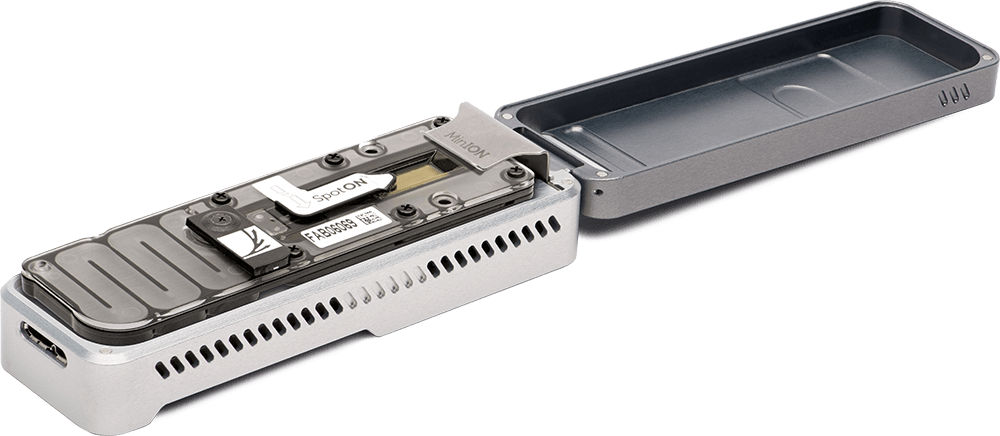Making music from DNA sequenced in a gallery using a MinION device
As part of the Ingenious and Fearless Companions exhibition at Birmingham Open Media (BOM), the scientists and artists who make up the High Altitude Bioprospecting (HAB) team – attempting to sample and sequence bacteria in the upper atmosphere using rockets and balloons – held a “Space Biohack” workshop where members of the public could meet the team, witness a live robot autopsy, and discuss future ideas for the project.
HAB was originally started by Oliver de Peyer, Paul Shepherd and Melissa Grant when they met through NESTA’s Crucible labs, they have been joined and advised by artists Anna Dumitriu, Alex May, and Kira O’Reilly.

Additionally, the team was joined by Nick Loman and several members of the research group he works with in the Institute for Microbiology and Infection at the University of Birmingham, whose research explores the use of cutting-edge genomics and metagenomics approaches to the diagnosis, treatment and surveillance of infectious disease, including Ebola and Zika.
They brought along one of the MinION device they use, which are the only portable, real time device for DNA and RNA sequencing.

Over the day, they used an air filter to collect samples from the environment, then prepared and sequenced their DNA in the gallery.
As a final stage, with the day drawing to a close, Alex May took the data and created a generative music system that played the genome using his Fugio software.
This isn’t the first time that Nick and Alex have worked together. In the 1990’s they ran a company together developing Zeus, the Bulletin Board Software (BBS) for the Commodore Amiga.

